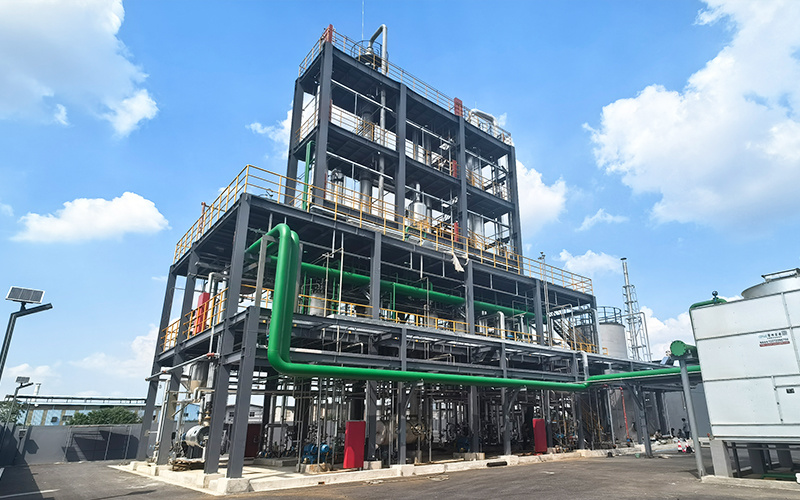Distillation technology
Key words: Multi-effect evaporation | distillation | resin adsorption
Classification:
Product Description
Introduction to Distillation Technology
Distillation technology is a separation process that utilizes the different volatilities of components in a mixture to separate them. It is widely used in the chemical and pharmaceutical industries, mainly for separating liquid mixtures with close boiling points. The basic principle is to gradually increase the purity of the product through multiple partial vaporization and condensation.
Principle of Distillation Technology
The principle of distillation is based on the different volatilities of different components in the same liquid mixture at the same temperature. In the distillation column, through multiple partial vaporization and multiple partial condensation, the concentration of light components in the gas phase and heavy components in the liquid phase gradually increases. The lighter components are obtained from the top of the column, while the heavier components with higher boiling points are discharged from the bottom of the column, thus achieving the separation of the mixture.
Examples of Applications of Distillation Technology
Distillation technology has a wide range of applications in the chemical and pharmaceutical industries. Taking methanol distillation as an example, the boiling point of methanol is only 64.8°C, which is much lower than that of water and other organic substances in the desorption liquid. According to the above principle, a recovery column (distillation column) is used to recover methanol. The desorption liquid containing about 40% methanol is introduced into the column from an appropriate position in the middle of the column. All packing layers above the feed position are called the distillation section, where the heavy components in the rising gas move downwards, and the light component methanol that is refluxed from the top of the column is transferred to the gas phase. This material exchange results in the gradual increase of light components in the rising gas, and the gas reaching the top of the column will become higher purity methanol. Below the feed position is called the stripping section, which extracts light components from the descending liquid, i.e., concentrating the heavy components. In addition, a condenser is installed at the top of the column to condense the gas into liquid, with part of it being refluxed and part being taken out as product. A reboiler is installed at the bottom of the column to provide heat, causing part of the liquid to vaporize. The gas rises along the column, fully exchanging mass and heat with the descending liquid in the packing layers, undergoing partial vaporization and partial condensation at each layer. Through multiple partial vaporization and partial condensation in the distillation column, the light component methanol is recovered from the top of the column, resulting in higher purity methanol, while the distillation residue is discharged from the bottom of the column.
Classification and Optimization Methods of Distillation Technology
According to the production process and characteristics of the working fluid, distillation technology can be divided into direct top heat pump distillation and indirect heat pump distillation. The direct top heat pump distillation system mainly consists of a distillation column, compressor, evaporator, and driver, featuring a simple structure and convenient operation. The indirect heat pump distillation system is mainly used for processing corrosive or temperature-sensitive substances, improving the efficiency and stability of the system by adding heat exchangers.
To save energy and improve efficiency, intermediate condensers and intermediate reboilers can be set up in the distillation column, utilizing the heat from different temperature ranges for optimized configuration to reduce energy consumption. In addition, heat pump systems are also an effective means of energy saving, improving the thermodynamic efficiency of the system by changing the temperatures of condensation and reboiling.
Related process
Online message
If you have any need, please feel free to contact us.
Phone:+86-15995082506(WeChat with the same number)
E-mail:jsyjhb001@163.com
Address: No.61, Lvshu East Road, Changzhou City, Jiangsu Province

Concerned about the public.
Copyright©2024 Jiangsu Yijian Environmental Protection Technology Co., Ltd.

